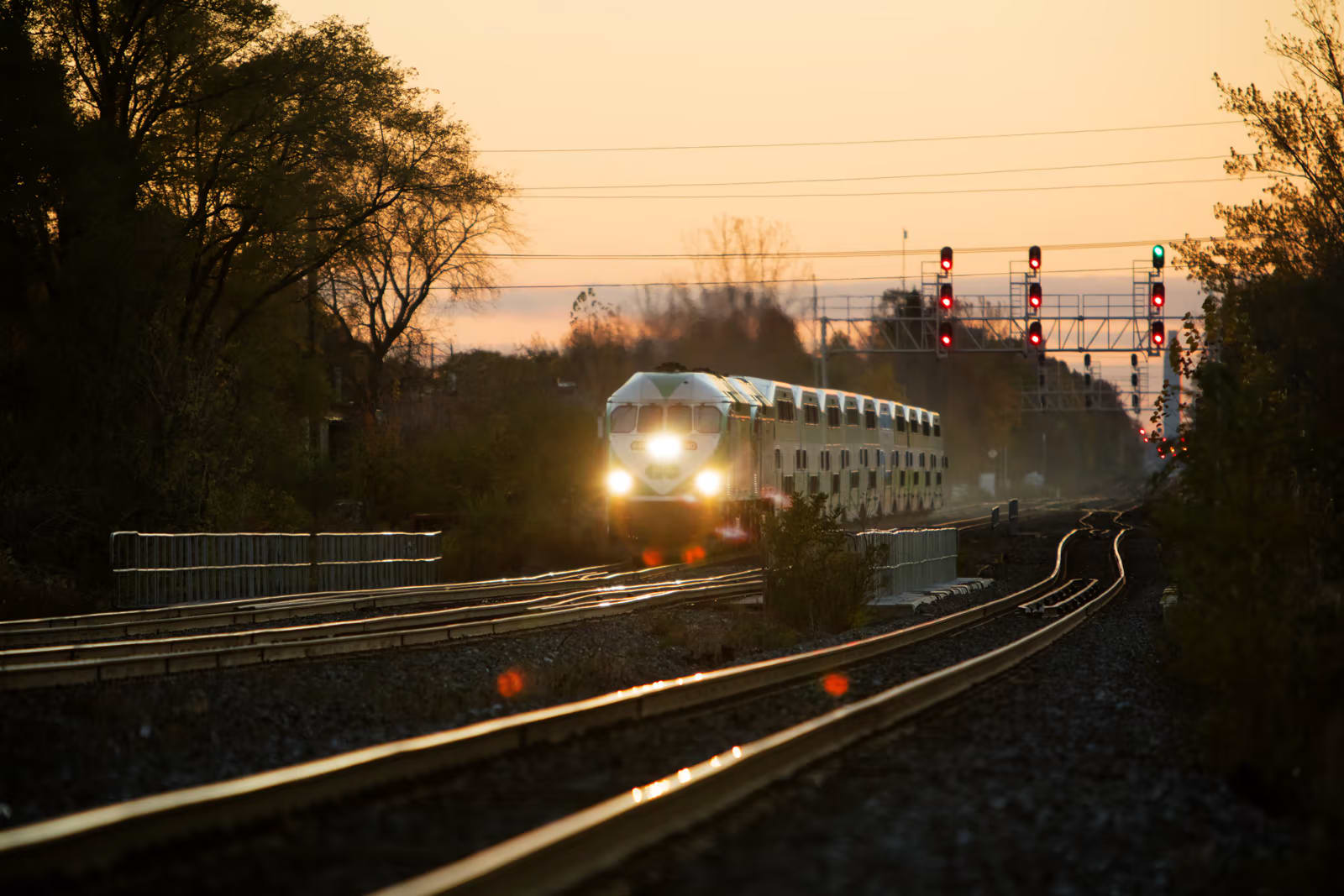What you safely need to know before taking photos of trains
As part of Rail Safety Week, let's take a look at what’s acceptable behaviour behind the lens.
Sep 22, 2020
As the saying goes, the more things change, the more they remain the same.
Rail fans have been around for centuries, but attitudes towards train photography and video have shifted in recent years.
“Security consciousness became heightened after the terrorist attacks in the 2000’s such as 9/11, the 2004 Madrid Rail bombings, and London 2005 attacks,” said Insp. Steve Weir, manager of GO Transit’s Safety Operations.
“Anyone who was observed to be taking photographs of trains and rail infrastructure was often reported to authorities as suspicious behaviour. This was good to see as it allowed us to take advantage of the 300,000 extra sets of eyes we have to keep our system safe.
“It also used to be contrary to Metrolinx bylaw to take photographs on Metrolinx property without prior authorization.”
But all that changed about a decade ago, when Metrolinx altered its rules to allow public photography on its property without prior authorization.
“The change was based on the growing trend of people having smart phones and taking pictures, and social media,” Weir said. “It was recognized that taking pictures on a train, in a train station, of train stuff was fun.”
Common photography and video hot spots of Metrolinx property and infrastructure include rolling stock (specifically new trains and coaches), construction sites, train bridges, and, of course, Union Station with the CN Tower in the backdrop (here’s looking at you, Instagram).
We’re putting special attention to this as part of Rail Safety Week – and Metrolinx president and CEO Phil Verster has a specific video message on that, below – but it’s important to follow the rules 365 days a year, around our vehicles and sites.
To see a past story on some great images, and talented photographers who are rail fans, just click here.
While most people abide by the rules, there’s still work to do when it comes to safety awareness, Weir said.
“Taking a selfie on a crowded platform means your attention is distracted – please don’t do it if trains are moving or could be moving,” he said.
“What we don’t like to see is when people take pictures from restricted areas such as on tracks, along rail corridors, at level crossings, or in rail yards. These areas are restricted and entry is illegal purely for safety reasons.”
While most people know to stay back from the yellow line on platforms, there are also safety precautions that must be followed away from stations, he said.
“For the most part, it is apparent where the railway property starts and end, either through fencing, gates, or where adjacent properties abut rail corridors,” Weir said. “There is no safe place, nor is there any legal place, to take photographs on any rail corridor, track, railyard, or bridges.
“As a general rule you must be at least 50 feet away from train tracks in any direction, but we recommend to stay much further away, and ensure you are allowed to be on the property where you are taking the photos from. If you’re unsure, give us a call.”
Things to keep in mind – including use of drones
When in doubt over the rules, here’s a quick guide to help keep you on the right track:
- Be safe
- Be respectful of others – not everyone likes having someone take their photo or be in the background of a photo.
- Don’t be surprised if a Metrolinx employee asks you why you’re taking photos. In fact, they might even offer to take it for you to ensure safety protocol is followed.
- Don’t use drones – drones should not be used at any time on any Metrolinx property. If you would like to use a drone for photography purposes, please contact Metrolinx first to get permission.
- Don’t go on or near tracks – it’s dangerous and illegal.
Photography requests from the media and companies looking to shoot television shows or movies are common, and safety rules and restrictions apply in those cases as well. Read more about them here and media information here.
GO Transit Safety Dispatch can be reached 24/7 at 1-877-297-0642.
Metrolinx loves the pictures and clips being taken and shared of your journeys on GO and UP. But when we see safety compromised, well, that just makes us shudder.
by Fannie Sunshine Metrolinx media relations advisor
